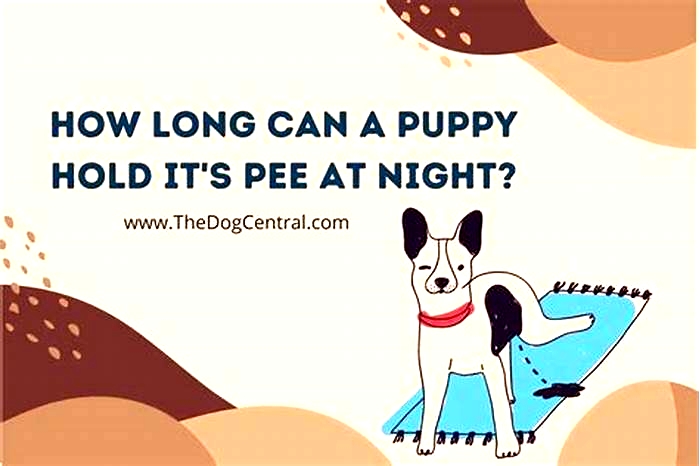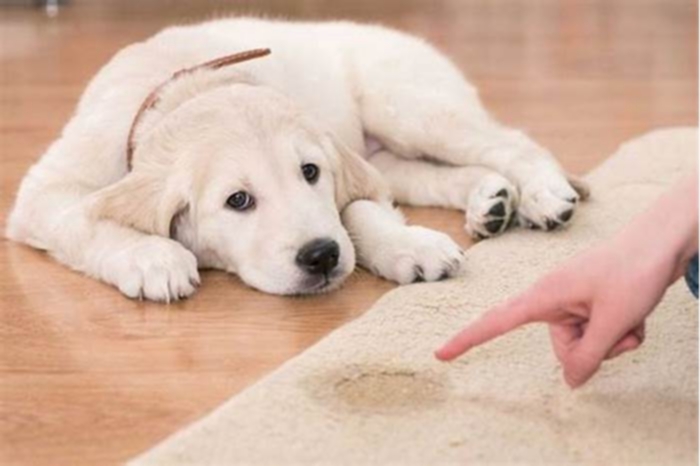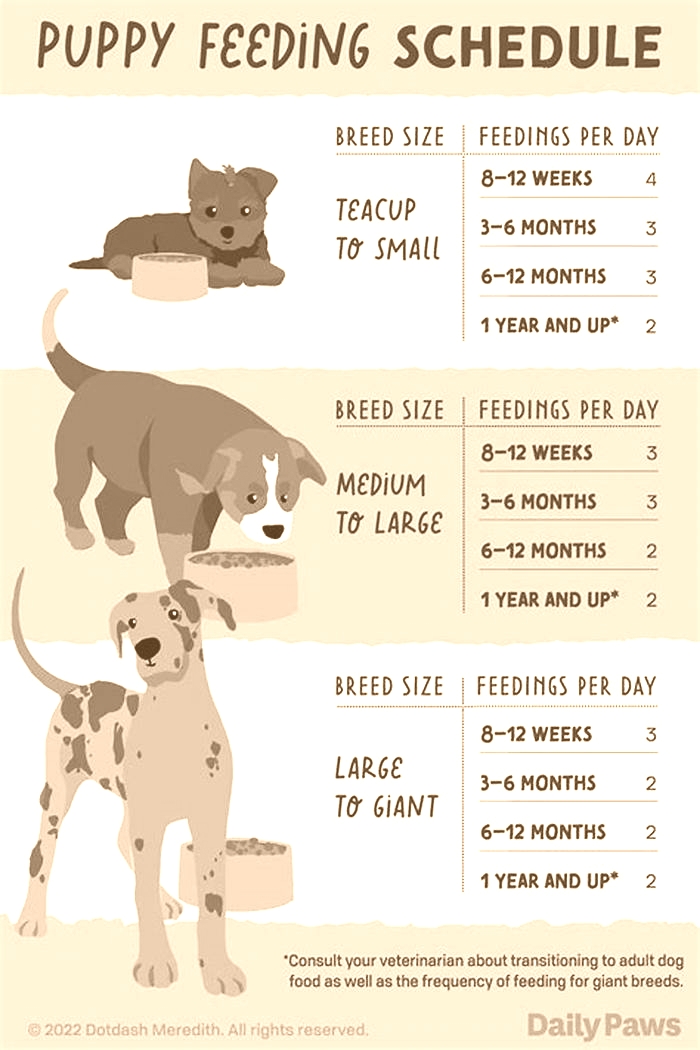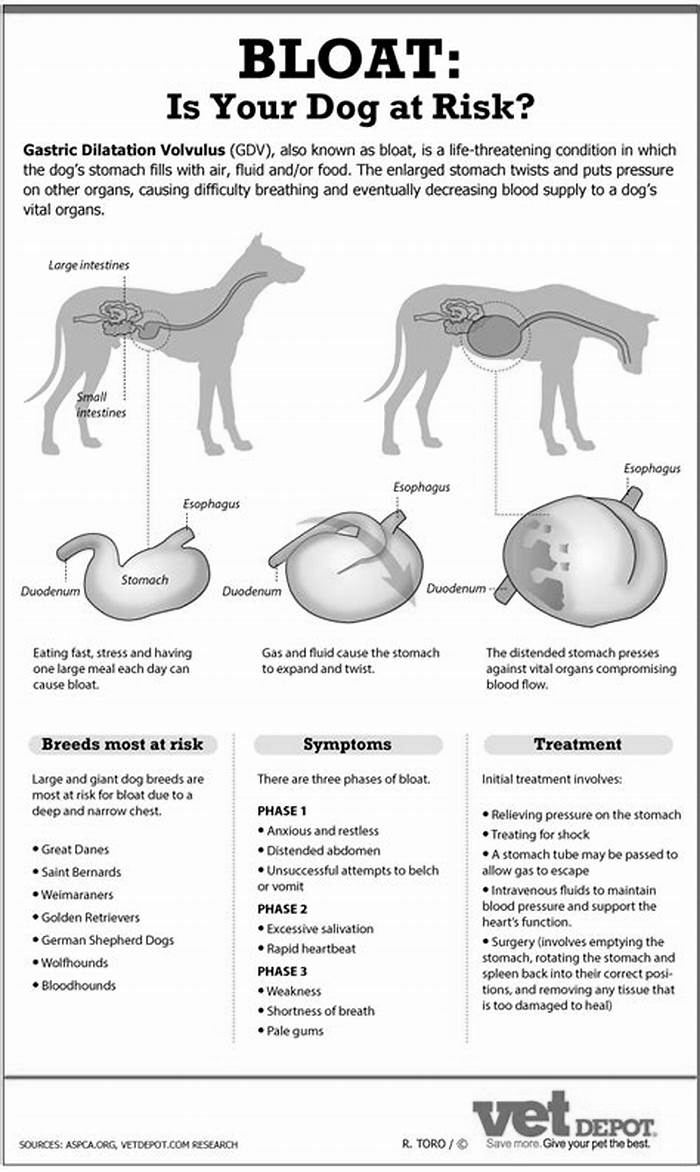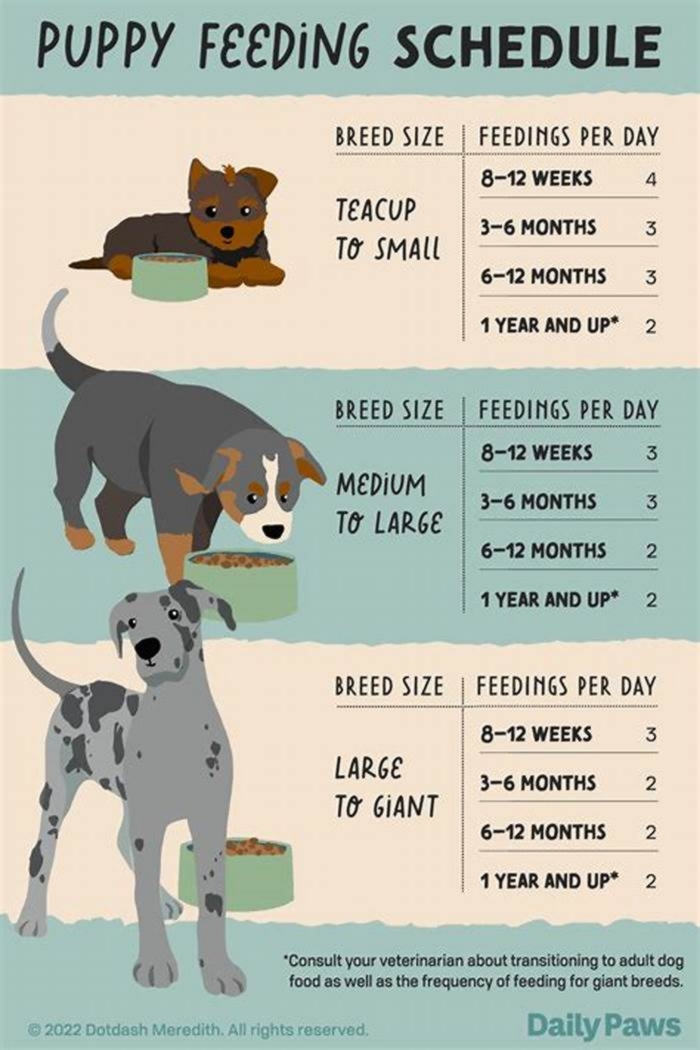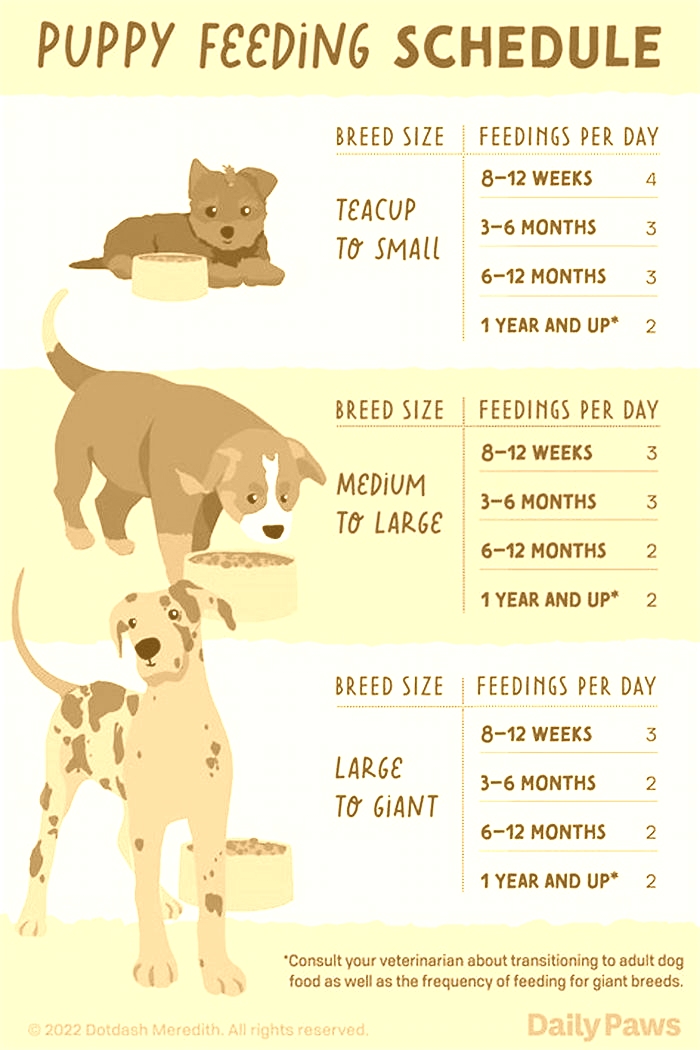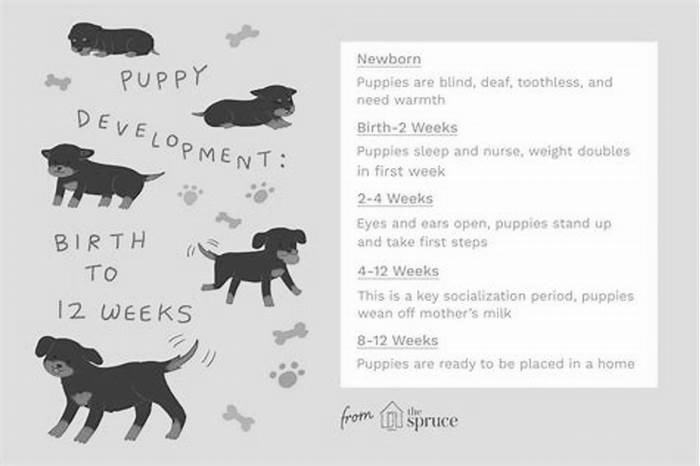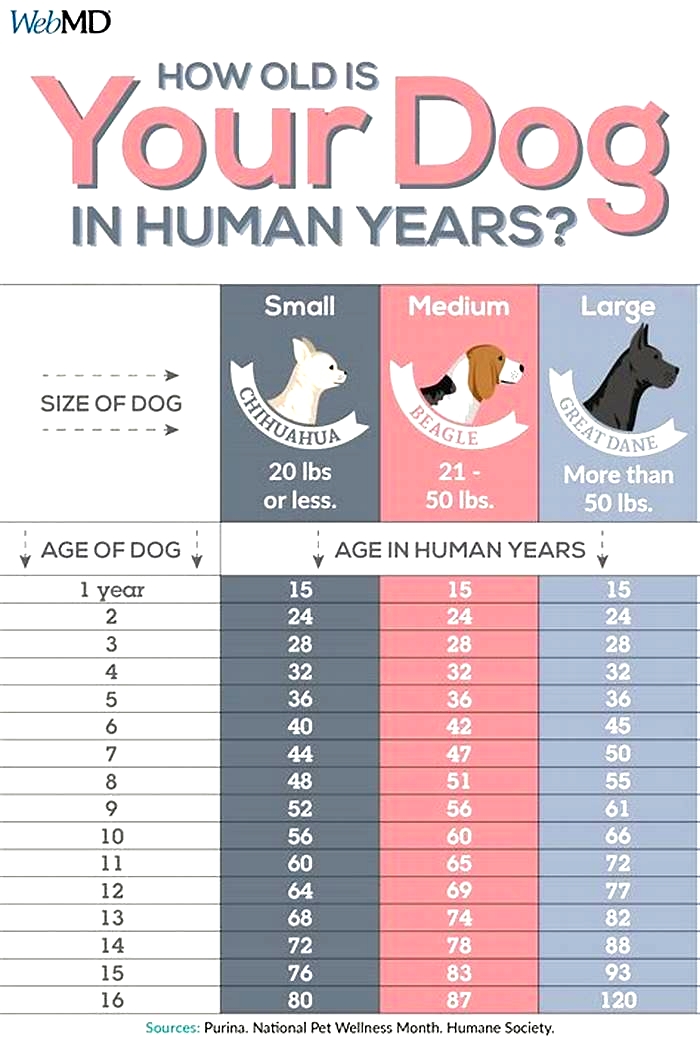How long can puppies hold their pee

When Do Puppies Develop Bladder Control Properly?
New puppies are great fun. However, one of the not so fun things is the constant peeing. Puppies pee on the floor, on your bed, furniture, and even on you. Frustrating doesnt even begin to describe it.
My wife and I compared having a young puppy to having a baby or toddler. Expect just as much mess and pee mishaps but there will be a time when your puppy has developed bladder control. So, dont think it wont happen.
When does a puppy develop bladder control? Many puppies will not gain full bladder control until they are 6 months old. It can several months for them to develop bladder control so you will have to go through several months of pee inside your house.
The bottom line is you need to put the effort into potty training. Patience and perseverance are key here heres more information and help.
At what age does a puppy have bladder control?
Puppy owners are advised to begin potty training between 3 to 4 months of age. If you do this, most puppies will gain full bladder control when theyre between 4 and 6 months old.
Before then, a lot of your life as a puppy owner will revolve around your puppys bladder and tummy.

Why is bladder control hard for puppies?
A puppys tiny body contains a tiny bladder. Puppies usually need to pee within 10 to 30 minutes of filling their bladder with water. This is why they have such little bladder control, and the reason for some frequent peeing.
This means that if you leave your puppy in a crate overnight without potty breaks, he will definitely make a mess in it because he is not physically capable of holding it in until you wake up in the morning.
How long can puppies hold their pee?
The rule of thumb is that the number of hours a puppy can hold his bladder = age + 1. That means a two-month-old puppy will be able to hold it for three hours.
How can I improve my puppys bladder control?
Improving a puppys bladder control begins with potty training which is all around a routine. If you take him out to do his business at these regular intervals, he will quickly get used to it. Puppies are smart little things, and it should be easy to teach them this new bathroom habit.
You should fit in your puppys potty breaks throughout his daily routine. For example, let him out when you get up first thing in the morning, then after his morning nap, then after a play session, after a meal, and so on, until his last potty break right before bedtime.
As your puppy grows up, you will be able to extend the time between potty breaks.
If you follow this routine with patience, you will help to speed up how quickly it takes for your puppy to gain full bladder control.
You can help that by paying close attention to your puppys eating, drinking, and potty habits. He should be pooping and peeing according to his diet. If he is peeing too often, you should get him checked by a veterinarian.
Invest in puppy pads
You can also use puppy training pads when their bladder control isnt there, before transitioning to potty training outdoors. Potty pads can absorb several cups of liquid without leaking.
They also come with pheromones that encourage puppies to go in one specific spot. These pads can help avoid messes and ruined floors and are available on Amazon.
What are the signs that your puppy needs to go out?
In the first few weeks of bringing home your puppy, you need to make sure that someone is at home to watch him frequently. You need to learn his signs that show he needs to go out whilst he still learns to control his bladder.
If your puppy is crying, pawing at the door, pacing in circles, sniffing, whimpering, or jumping where you hang his leash, he likely needs to poop or pee.
You should get him outside as soon as possible and reward him if he does his business in the designated area.
This is how potty training begins. Consistent positive reinforcement when he does something right will lead him to understand that its worth his while to wait and that you will be pleased with him when he does well.
The worst thing an owner can do is to punish their puppy when he gets it wrong. They are far too young to have developed bladder control yet and cant help peeing in places.
Punishment will only lead to fear and aversion and may even lead to your puppy peeing even more because hes so scared of you. Positive reinforcement and constant rewards are the healthiest way to train puppies and dogs.
Is my puppy peeing too much?
Puppy bladders are small, but they grow in size quickly as puppies age. Suppose your puppy urinates more often than the bladder formula (hours = age in months + 1). In that case, he might be suffering from a health problem.
For example, if your four-month-old puppy is peeing once an hour, he might have a urinary tract infection, diabetes, kidney problems, or other internal conditions. If there is upheaval in your habits at home, he may be experiencing anxiety or is seeking your attention.
Other reasons for puppies and dogs peeing too much: drinking too much water due to hot weather, marking behavior, bladder incontinence after getting spayed, and more.
Its best to keep track of your puppys peeing habits as he grows up. If theres a marked change in frequency, it may be best to consult a veterinarian.
What is the best way to clean puppy pee?
Potty training is a long, arduous process, and your puppy will not develop full bladder control overnight. For the first few months of your puppy living at home, you will have to deal with many pee accidents. Possibly even multiple times a day.
You need to act quickly because you dont want the pee smell to permeate your house. No matter what surface your puppy pees on, its best to be vigilant and to take action immediately.
Aside from getting rid of the smell, thoroughly cleaning a pee spot will ensure that your puppy will not be going back to pee on it again.
Any lingering smell that the puppy can detect might lead him back for another go at the scene of the crime over and over again.
If your puppy has had a little pee accident, follow these steps:
- Glove up: Always wear gloves before cleaning dog pee or poop. Animal waste contains many pathogens that can cause problems in humans, such as the Leptospirosis bacteria in dog pee or tapeworm parasites in dog poop. Make sure not to get any of it on your bare hands.
- Soak up the liquid: Use a thick wad of paper towels or toilet paper to soak up the urine. Try to absorb as much liquid as possible, but dont rub any of it on the surface.
- Use an enzyme-based cleaner: The best cleaners have enzymes that neutralize the substances in urine that cause stains and odors. Most chemical cleaners are good at removing stains but cannot completely eliminate the odor. All dogs have great senses of smell, and they will likely be able to sniff out their marked spots again.
Avoid cleaners that contain ammonia because these products may even mimic the smell of urine and make the pee spot even more attractive to your puppy.
Here is a pet-specific cleaner on Amazon that can neutralize pet stains and smells. They can be used on all types of surfaceswood, carpet, furniture, bedding, stone surfaces, car interiors, and more.
If you dont have an enzymatic cleaner, you can mix 1-part white vinegar with 1 part water and a splash of lemon juice. You can apply this solution using a sponge or a spray bottle.
Diluted vinegar should be safe for most surfaces in your home, but make sure to test it out with twice the water content on sensitive areas.
If you smell dog pee but you cant find it, try your best to find the pee spot. The smell will not just go away on its own, and your puppy will surely go back to that spot the next time he needs to pee.
Conclusion
Bringing home a brand new puppy is a fun and exciting time for any household. Puppies are so great to have around because theyre tiny, adorable, they love to play, and they conk right out on any surface when theyre tired.
But it will take lots of accidents and patience before your puppy gains full control of their bladder and you can help them with training.
Image in header via https://unsplash.com/photos/fk4tiMlDFF0
Puppy Potty Training Timeline And Tips
Housebreaking, house-training, orpotty training no matter what you call it, all new dog owners want to teach their new puppy not to mess inside their new home. The best way to achieve this goal is by establishinga timeline to follow, and sticking to it.
While youre adhering to your timeline, it helps to firmly establish the rules for where your puppy should and should not eliminate, anddog crates and puppy pads can be very useful training tools to assist you in establishing your potty training plan.
When You Wake Up
Each day begins the same for you and your puppy. When the alarm clock goes off, wake up and get your puppy out of the crate and outside to do their business. Dont stop to make coffee, check emails, or brush your teeth.
Keeping the crate in or near your bedroom lets you hear a whimper or a whine if your pup needs to go out during the night or before your alarm sounds.When theyre still small, you may be able to pick your pup out of the crate to carry them outside. This will prevent them from stopping and peeing on the floor on the way to the door.
Always head out the same door to the same area where you want your puppy to potty, and keep them on a leash outside while training (even in a fenced yard), so you can see whats happening and react immediately.
After Meals
Another morning ritual will be breakfast. After you take your puppy out to potty, they will be ready for their first meal of the day. Try to keep this scheduled at the same time each day. This will aid in regulating elimination, so you can set your watch to potty time.
After the meal, only wait between 5 and 30 minutes to take your puppy outside. The younger the puppy, the sooner they should be brought out after a meal to potty. As the puppy grows older, they will gain bladder control and learn to hold it longer each day.Mostpuppieseat three to four meals a day when they are growing, and most puppies will have to poop after meals, so paying attention to this short follow-up period is important.
Also, remain watchful when the puppy drinks water. Treat this just like a meal, and take them out to potty soon afterward. Choosing a puppy food that digests well and avoiding feeding within two hours of bedtime will help.
After Playtime And Naps
There are many other times that a young puppy will need to go potty, besides the first thing in the morning and after each meal. These instances include periods after naps and playtime.
Naps are mini-versions of the morning routine. Make sure that whenever your puppy is sleeping, you take them outside the moment they wake up.
During playtime, the stimulation of the digestive tract may also give your pup the urge to have a potty break. Some seemingly random clues that a puppy needs to go out can include sniffing the floor or carpet, wandering away from the family, becoming overexcited withzoomies, whimpering, or running to the door.If you see any of these signs, take your puppy out to potty immediately.
Praise for Potty Training Success
As you establish the routine of taking your puppy out after sleeping, eating, and playing, you also must focus on what to do once you are outside.
Find a spot that will become the potty spot, and always take your dog to the same spot. Stand quietly and wait until they are ready, and as they commence, give a voice command or signal to go potty or do your business. Then wait for the results, and praise lavishly if your puppy goes. Say good boy/girl! then give the pup a yummy treat.
Do this every time you are outside (or indoors if using puppy pads or dog litter boxes), and soon enough, the puppy will understand that doing their business in the proper spot will bring lots of love and treats. Also, after they eliminate outside, play with your pup for a few minutes before rushing back inside.
If your pup doesnt go when youre outside, you may have to take them inside and come back out again in a few minutes. Even they do go, they may need to head back out very soon, so stay vigilant.
Remember, if there are accidents indoors, do not punish your puppy. If you catch them in the act, you can make a noise or say uh-oh to get their attention, and they will likely stop. Immediately, gently pick up your puppy, take them outside, and praise them heartily when they finish up. Always be sure to sanitize soiled indoor areas with appropriate pet stain cleaning products, so the pup isnt drawn to the same spot again.
Many owners have great results by also placing a bell on the door handle, and training their puppy to ring the bell when they need to go out. Start by ringing the bell as you exit with your dog, and praise the puppy as soon as they learn to ring the bell on their own.
Leaving Home and Last Call
When you have to leave home for several hours and your puppy needs to stay in a crate during the day, remember to plan ahead. If youre unsure about how long your puppy can hold it, use the month-plus-one rule. Take the age of your puppy in months and add one, and that is the maximum number of hours that your puppy should be able to comfortably hold it between potty breaks. A 3-month-old puppy plus one equals 4 hours that they should be able to stay in the crate without a mess.
Remember that the last thing you should do before you go to bed for the night is to take your puppy out for one last potty break before bedtime. However, your pup will usually be able to hold their bladder for a longer period when they are asleep and not active.
When it comes to how long potty training takes, it depends on the puppy and the schedule you keep, says Dr. Jerry Klein, AKC chief veterinary officer. If training begins early, a 6-month-old puppy is usually able to be depended on most of the time to eliminate outside. However, if you feel that youre not making progress, you should have the puppy checked out by a veterinarian. They may have a urinary tract infection or some other health issue causing the delay in house-training.
By scheduling meals, walks, playtime, and other activities in a daily routine, you and your pup will be on your way to success in potty training, but it wont happen overnight, so remember to be patient.






